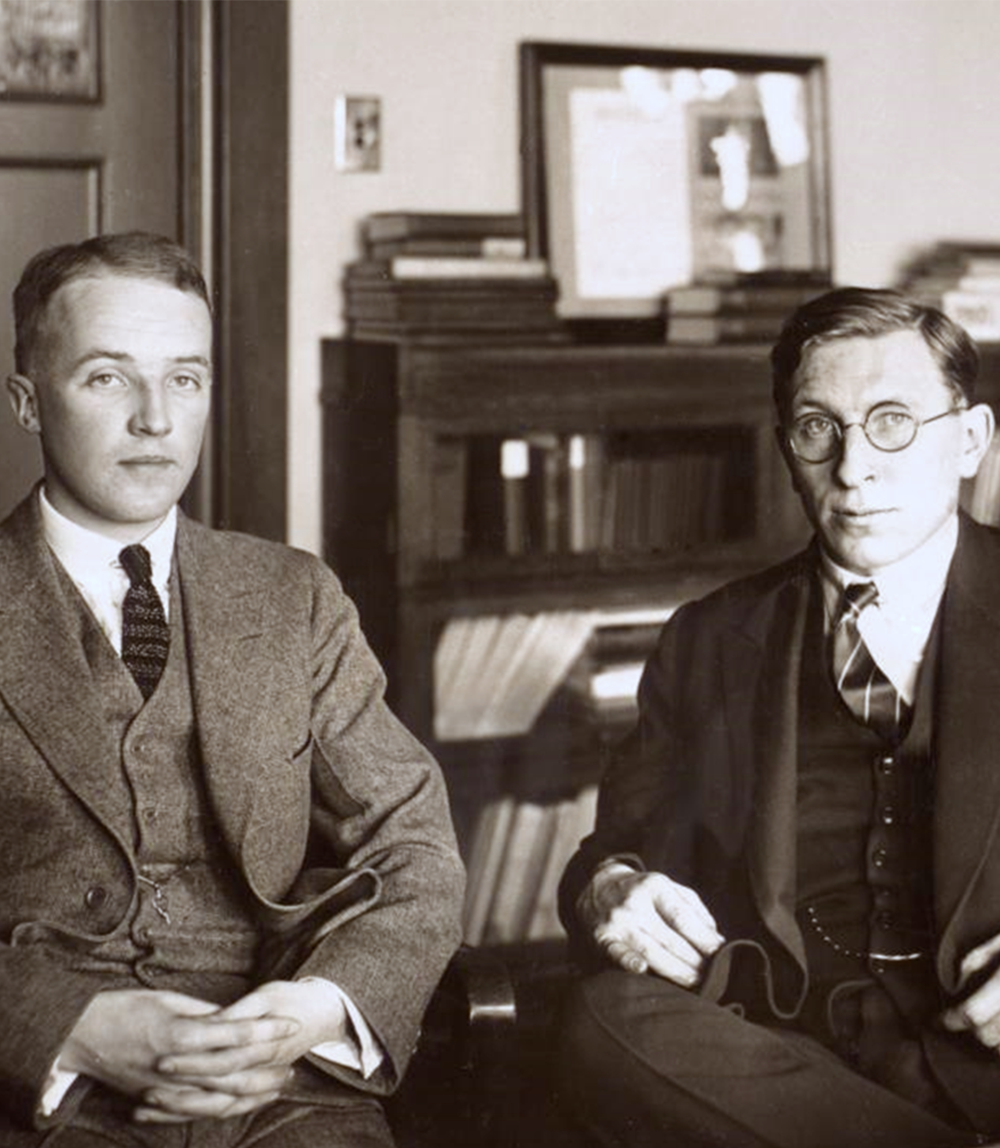
100 Years of Insulin
With your support, we are changing the lives of people living with type 1 diabetes

Moving beyond insulin, accelerating towards a cure.
2021 marks the 100th anniversary of the discovery of insulin by researchers Dr. Frederick Banting and Charles Best at the University of Toronto.
Before insulin treatment, a diagnosis of type 1 diabetes (T1D) meant inevitable death for children. T1D is an autoimmune disease where the body’s immune system attacks and destroys the cells in the pancreas that make insulin critical to maintaining healthy blood sugar levels. There are no therapies available yet to prevent it, and the causes are not yet fully understood.
In 1921, Frederick Banting and Charles Best discovered that the pancreas produced the insulin hormone under the directorship of John Macleod at the University of Toronto.
With the help of James Collip, they purified a synthetic version of insulin and produced the first real treatment for diabetes. To this day, it remains one of the most important scientific breakthroughs in the medical field. Banting and Macleod earned a Nobel Prize for their work in 1923.
While there have been many advancements in technology and delivery of insulin over the past 100 years; either by injection or pump, it remains the only treatment for T1D.
100 years of insulin research progress
-
1921
Frederick Banting, John Macleod & Charles Best discover insulin in Toronto.
-
1922
First person with T1D receives an insulin injection, and mass-production of insulin begins.
-
1960s
First prototype insulin pump is developed.
-
1970
JDRF is founded by a group of parents whose children have T1D.
-
1970s
Research shows that T1D is an autoimmune disease.
-
1978
Test to measure HbA1C as a way to measure diabetes control is developed and first synthetic human insulin is produced.
-
1980s
The first easy-to-use blood glucose meters become commercially available.
-
1983
First commercial insulin pump.
-
1986
Introduction of the insulin pen.
-
1989
JDRF-backed researcher performs first islet transplant in humans.
-
2000
JDRF-backed researchers at the University of Alberta establish Edmonton Protocol to successfully transplant donor islet cells using much less toxic immunosuppressive drugs.
-
2006
JDRF launches the Artificial Pancreas Project, bringing together the best scientists from the public, private and academic sectors to collaborate on driving artificial pancreas systems to market.
-
2014
JDRF-funded researchers develop breakthrough protocols for converting human stem cells into insulin-producing beta cells in the lab and first human trials of novel islet cell encapsulation therapy devices begin.
-
2015
First trials of “smart” insulins begin.
-
2018
First artificial pancreas system is approved in Canada.
-
2020
Second artificial pancreas system is approved in Canada.
-
2021 and beyond
The next breakthroughs in T1D research!